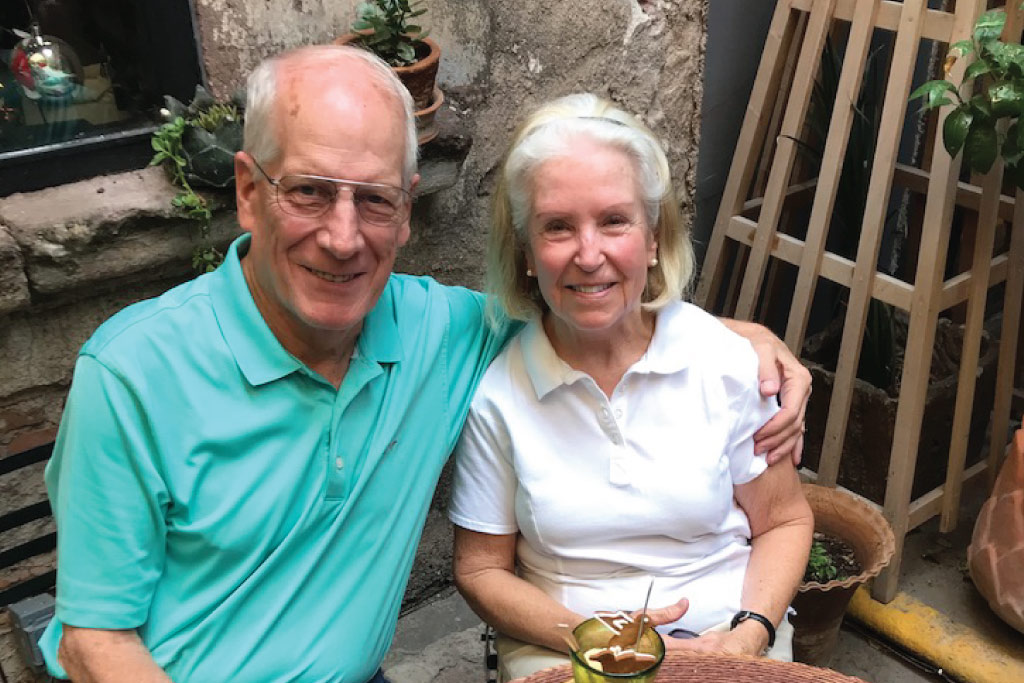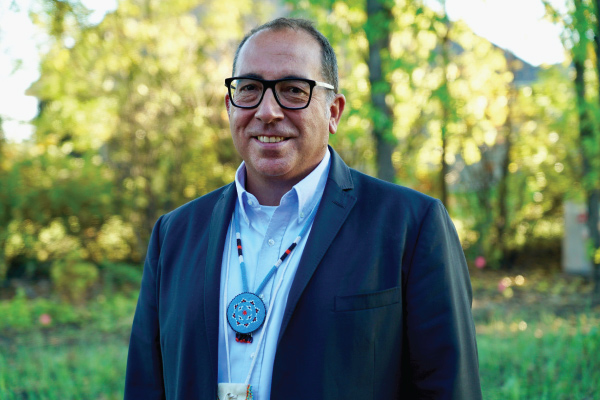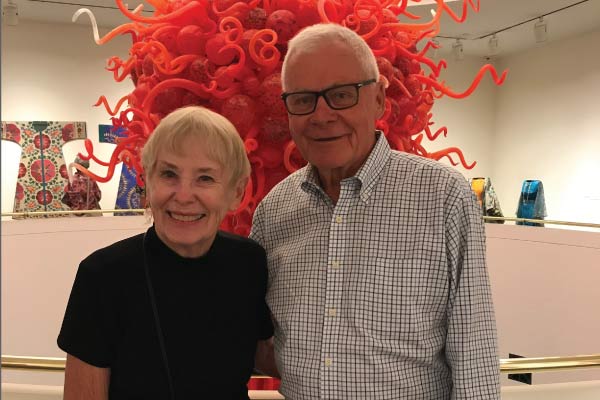The Multiplier Effect
UND alum uses his love for North Dakota history to establish an endowment supporting Indigenous medical students.
To hear ophthalmologist and UND graduate John Shore, '75, tell it, the story of how two New Hampshire natives ended up at the UND School of Medicine & Health Sciences (SMHS) back in 1973 has a little to do with luck—and a lot to do with former School Dean Ted Harwood.
“We were stationed at Minot, and I was applying to med school as a resident of North Dakota, even though I hadn’t been born there,” said Shore, speaking of himself and his spouse Suzanne. “We were accepted while I was flying combat in Vietnam, and I had to interview outside the regular interview process. Dean Harwood made that possible.”
As John put it, Harwood had let him interview in early August just before leaving for Southeast Asia.
“This was totally out of cycle and he was the only person to interview me,” John told North Dakota Medicine over the phone. “I never thought he would let me in. When I got the letter of acceptance from UND [in Vietnam], it sat on my bunk for five days and three combat missions before I opened it. I knew once I opened the letter our life was changed forever.”
Finally opening the letter, John called Suzanne—at home in New Hampshire—that night and told her the good news.
“That was the only phone call between us the entire time I was in Southeast Asia,” said John. “At that moment we promised we would never forget our good fortune. We promised each other that someday we would make a gift to UND for opening the door for us.”

Dr. John, '75, and Suzanne Shore have developed an appreciation for North Dakota's Indigenous population and their histories.
FLYING ACE
And remember his Alma Mater John did—but not before serving his country in Vietnam.
John graduated from the University of New Hampshire in 1968 on an Air Force ROTC scholarship. This meant that he was sent almost immediately to Texas for training and eventually was selected to fly F-106 fighter interceptor planes bound for what used to be called Indochina. From there he was assigned to the 5th Fighter Interceptor Squadron based out of Minot Air Force Base in North Dakota.
It was during these years of service that John, a zoology major, developed an interest in practicing medicine, which is why he applied to UND.
“New Hampshire at the time didn’t have a medical school, and I’d been out of college for a few years, but I wanted to apply, so I flew an F-106 from Minot over to Grand Forks Air Force Base and took a taxi in to town and took my test there at the medical school—in my flight suit actually,” laughed John. “Then I flew back to Minot!”
Then he flew across the ocean.
“I knew eventually I would have to go to Vietnam,” he continued. “I was on the short list and decided to volunteer to train as a Forward Air Controller. This meant three more months of transition training and then departure to Tan San Nhut Air Base in Saigon. I arrived in August 1972 and flew as a combat pilot there.”
One hundred and three missions and 520 hours of combat time later, over both Vietnam and Cambodia, John was sent home—along with everyone else.
“I flew one of the last missions in South Vietnam on the day before the war ended,”
recalled John.
After completing a handful of prerequisite courses back at Minot State University
following his service, John and Suzanne headed to Grand Forks where John earned his
Bachelor of Science in Medicine degree in 1975—in the last BS Med class the SMHS offered
before officially becoming a four-year doctor of medicine program. He earned his MD
from Washington University in St. Louis two years later.
“[Dean Harwood] said, ‘Even though you might not be practicing in North Dakota, you’ll be taking care of the North Dakotans in the military and those all over the country,’ and that was true,” said John. “I think he used that as a justification. But it was meaningful to us and we never forgot that.”
I’ve been a teacher all of my life and I’ve watched a lot of people come up from not having a lot of resources to being able to excel in their lives.Dr. John Shore, '75
INMED ENDOWMENT
All of this is why John and Suzanne recently contacted the School about establishing a scholarship endowment that would “make an impact” on UND students.
After a conversation with not only SMHS Development Director Jeff Dodson but Dr. Don Warne of the School’s Indians Into Medicine (INMED) and Public Health programs, the Shores settled on a home for their gift.
Both John and Suzanne, it seems, had developed an interest in North Dakota history in their years there. Having traveled from Texas up through the Black Hills of South Dakota and Badlands of western North Dakota to get to Minot, Suzanne especially was struck by the lives and histories of the states’ Indigenous people.
“My first year at UND was also the first year of the INMED program,” John added. “So, I got to know some of the INMED students and learned where they came from. It was an exciting thing to watch them learn, earn a degree, and eventually be able to impact the health in their communities.”
Impressed with the program’s track record of success and multiplier effect of those who have trained at UND over the past 47 years, the Shores needed little convincing to choose INMED as the recipient of their gift.
“Being able to make a contribution that would help others get through the program was important,” said John, who makes his home with Suzanne in Austin, Texas. “I’ve been a teacher all of my life and I’ve watched a lot of people come up from not having a lot of resources to being able to excel in their lives. Being able to open the door for others was something that really interested us.”
For not only has INMED produced more than 250 physicians of American Indian-Alaska Native heritage, making UND the top producer of Indigenous health providers on the continent, but it now boasts a first-in-the-world doctoral program in Indigenous health.
“All of that is really amazing,” said John, who retired from clinical practice in October 2019 and now teaching medical students at the University of Texas Austin. “North Dakota really helped us out. Both our children were born in North Dakota and it’s how we got here. It was such an honor to be able to come.”
JOIN UND SUPPORTERS LIKE JOHN AND SUZANNE
The Shore's gift supports Indigenous students earning their medical degrees at UND as they aim to serve tribal populations for generations to come. You can make a similar impact on UND students through a variety of giving options.


